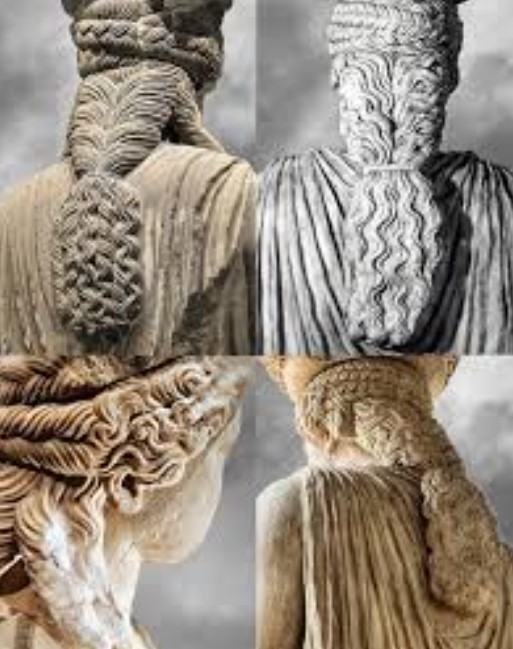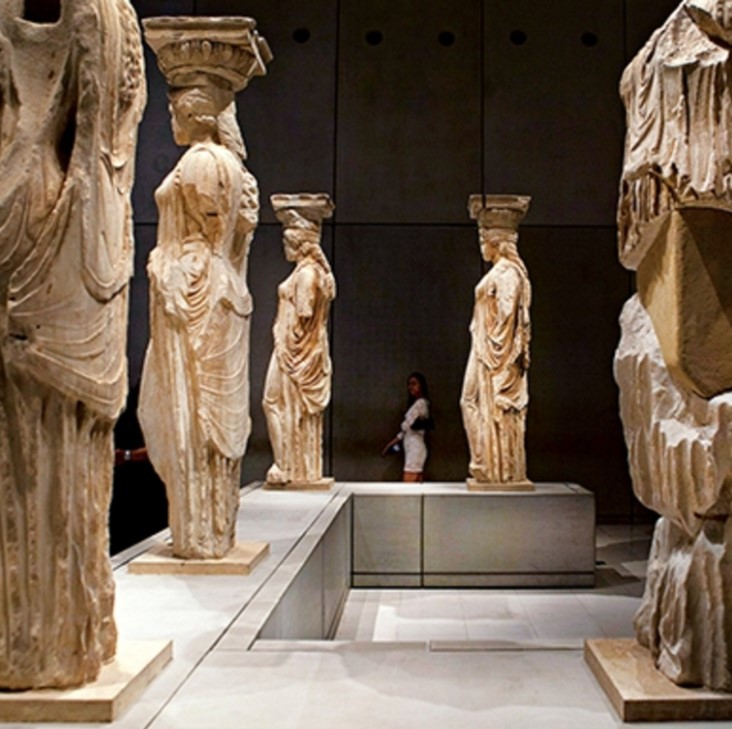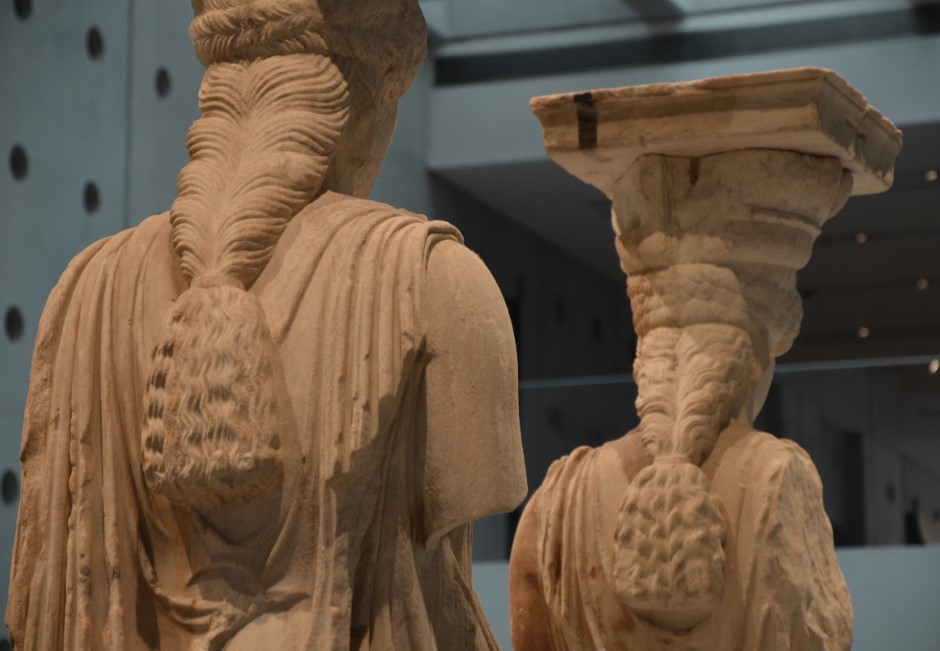The Caryatid statues are among the most iconic and awe-inspiring figures in ancient Greek architecture. These elegant sculptures, with their intricate braids and graceful poses, have captivated art enthusiasts, historians and tourists for centuries. As works of art and structural elements, they offer a glimpse into the craftsmanship and artistic mastery of the ancient Greeks. In this article, archeology.dulichvn.net explores the history, significance and legacy of these incredible statues, which once adorned the Erechtheion Temple on the Acropolis Hill in Athens.
1. Understanding the Caryatid Statues
Caryatids are not just beautiful sculptures but also serve as vital architectural elements. These statues depict female figures, often draped in flowing robes, that replace traditional columns in ancient Greek buildings. They are best known for their use in the Temple of Erechtheion on the Acropolis of Athens, where they supported the roof in place of conventional columns.

1.1 What Is a Caryatid?
The term “Caryatid” is derived from the Greek word karyatides, meaning “daughters of Karyai,” a town in the Peloponnese. According to ancient Greek mythology, the women of Karyai were said to have danced in honor of the goddess Artemis. Over time, the term came to refer to female statues used in place of columns.
1.2 Purpose and Function in Architecture
The Caryatids were designed to serve as both decorative and functional elements in architecture. They were used in place of columns to support the entablature, or upper structure, of a building. The incorporation of human figures into the design provided a more dynamic and visually engaging alternative to traditional columns.
see more: The Magnificent Statue of Athena: A Symbol of Ancient Greek Art and Culture
1.3 The Temple of Erechtheion: Home to the Famous Caryatids
The most famous Caryatids were used to support the porch of the Temple of Erechtheion, a unique temple on the Acropolis of Athens. This temple was dedicated to both Athena and Poseidon and featured an asymmetrical design due to the uneven terrain of the Acropolis. The Caryatids stood on the south porch of the temple, replacing the usual columns with graceful female figures, each holding the weight of the structure on their heads.
2. The Artistic Mastery of the Caryatids
The craftsmanship of the Caryatid statues reflects the high level of artistic skill achieved by ancient Greek sculptors. Each figure is carefully carved with intricate details that demonstrate both the technical expertise and aesthetic sensibilities of the time.

2.1 The Depiction of Braided Hair
One of the most striking features of the Caryatids is their braided hair. The sculptors skillfully wove the hair into detailed, lifelike braids, which adds to the realism and grace of the figures. This attention to detail in the hair was not only an artistic choice but also a symbol of the figures’ youth and vitality.
2.2 Clothing and Drapery
The draped clothing of the Caryatids further emphasizes their grace and femininity. The folds of the robes are intricately carved to convey movement, giving the statues an almost lifelike appearance. The flowing garments add an element of dynamism to the figures, making them appear as if they are in mid-motion, frozen in time.
2.3 Realism and Proportions
The proportions of the Caryatids were carefully calculated to ensure the statues had both beauty and stability. The sculptors paid meticulous attention to the balance between form and function, ensuring the figures were not only aesthetically pleasing but also structurally sound to support the roof of the temple.
3. The Significance of the Caryatids in Greek Culture
The Caryatid statues are not only architectural features but also carry significant cultural and symbolic meaning. They represent the ideals of beauty, strength, and femininity that were important in ancient Greek society.

3.1 Symbolism of the Female Form
In ancient Greek art, the female figure was often associated with fertility, nurturing, and the divine feminine. The Caryatids’ graceful poses and flowing robes symbolize these qualities. Their placement as structural supports in the temple further emphasizes their symbolic role as the pillars of society and the divine.
3.2 Mythological Connections
The use of female figures in architecture is also tied to Greek mythology. The town of Karyai, after which the Caryatids are named, was dedicated to the worship of Artemis, the goddess of the hunt and protector of women and children. The statues may have been designed to invoke the spirit of Artemis, who was seen as a protector and source of strength.
3.3 The Legacy of the Caryatids
The legacy of the Caryatids extends far beyond their original context in the Temple of Erechtheion. These statues have become an enduring symbol of ancient Greek art and architecture. Their beauty, craftsmanship, and symbolism have influenced generations of artists and architects, and they continue to be admired by visitors to the Acropolis and museums around the world.
4. The Preservation and Display of the Caryatids
Today, the Caryatids are preserved and displayed in museums where they continue to inspire awe and admiration. Though the original statues no longer stand in the Temple of Erechtheion, replicas are on display in their original location, and the original figures are housed in two prominent institutions.

4.1 The Athens Acropolis Museum
The original Caryatids were removed from the Temple of Erechtheion in the early 19th century and are now exhibited in the Athens Acropolis Museum. Here, visitors can see the figures up close and appreciate the skillful artistry and historical significance of these remarkable sculptures.
4.2 The British Museum
In addition to the Acropolis Museum, one of the original Caryatids is also housed in the British Museum in London. This statue was removed during the 19th century and, despite controversy, has remained one of the highlights of the museum’s collection of ancient Greek art.
4.3 Cultural Significance Today
The Caryatids continue to be a source of cultural pride and a reminder of the rich artistic heritage of ancient Greece. They represent the timeless beauty and architectural genius of the ancient world, and their legacy lives on as an enduring symbol of classical art.
Conclusion
The Caryatid statues of the Temple of Erechtheion are masterpieces of ancient Greek art that combine architectural functionality with artistic beauty. These statues, with their intricate braided hair, flowing robes, and graceful postures, stand as enduring symbols of femininity, strength, and divine protection. Today, the Caryatids continue to captivate audiences around the world, offering a glimpse into the cultural and artistic achievements of ancient Greece. Whether viewed in Athens or London, the Caryatids are a testament to the lasting legacy of ancient Greek civilization.

CÁC TIN KHÁC
Mark Twain & Olivia Langdon: A 36-Year Love Story Filled with Laughter and Devotion
The Tollund Man: A 2,400-Year-Old Mystery Preserved in a Danish Bog
Skara Brae: Scotland’s Hidden Neolithic Village
Porta Nigra: The Hidden Depths of Trier’s Iconic Roman Gate